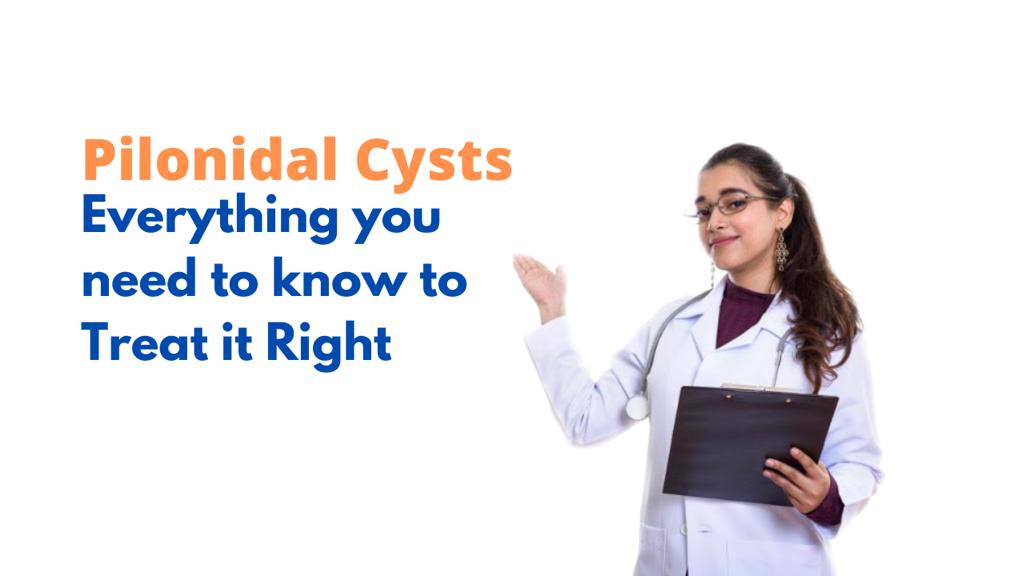
Pilonidal Sinus/Cysts - Everything You Need To Know To Treat It Right
Medically reviewed by

Dr. Shuddhattam Jain's
Pilonidal sinus or cyst refers to a sac of tissue that is usually filled with any fluid or pus. It mostly has a round shape and is often located at the end of the tailbone just at the cleft or top of the crease of the buttocks. It is a skin infection caused due to ingrown hair. It is a common infection found in 26 people per 100,000 population.
The infection is because of unnecessary collection of hair, debris and dirt. Sometimes, the hair punctures the skin and gets embedded in the small opening. As dirt collects in the opening, it becomes infected.
Causes
There is no known cause for pilonidal cyst occurrence. It is not a contagious problem. As it is caused by ingrown hair, it may be considered hereditary. If most of your family members have rough and thick hair, pilonidal cysts may be common in your family. However, they commonly occur in more men than women. Even though pilonidal cysts affect men between the ages of 20 to 35, they can occur anywhere between puberty and the age of 40.
Following are some of the reasons why pilonidal cysts may occur:
Symptoms
Risks of not Treating
Pilonidal cysts cause extreme pain when you sit down. In some cases, the pilonidal cyst can be an acute problem or even become chronic and recurring. If left untreated, a chronic pilonidal cyst can quickly become abscesses and spread to nearby sinus cavities which are empty spaces found underneath the skin.
Treatment Options
Your doctor will perform a thorough physical examination to diagnose a pilonidal cyst. They will check the crease of your buttocks for the presence of a Pilonidal Cyst. It is easily visible to the naked eye.
The spot may look like a simple pimple or a cyst filled with pus and blood. Sometimes, the cyst may be oozing fluid. It can also grow into a swollen abscess. If the infection is severe and your doctor suspects that the abscess is large, they may ask for an MRI or CT scan to look for sinus cavities under your skin that could also become potentially infected. When there is more than one sinus tract, immediate action must be taken to relieve severe pain.
When there is no pain or inflammation and the Pilonidal Cyst presents without infection, your doctor may prescribe broad-spectrum antibiotics. These antibiotics will clear the infection and with the right drug, the cyst may disappear on its own. Metronidazole, erythromycin, flucloxacillin, clindamycin, and clarithromycin are some antibiotics used for treating aerobic, gram-positive and gram-negative bacteria usually associated with Pilonidal Sinus.
If the pain is mild, you can try home remedies such as hot and wet compress. This may help in draining the pus and reducing the swelling. Taking a sitz bath or warm bath with Epsom salts is a great home remedy for different skin infections. Ibuprofen can also be taken for pain relief.
A simple surgical procedure is best to treat pilonidal cysts and avoid further recurrence. It is usually an outpatient procedure carried out with a local anaesthetic. The doctor will make a small incision with a scalpel. Pus, debris and other fluid will be removed through the incision. The wound can be packed with sterile gauze and stitched up depending on how deep the incision was made and the location of the incision.
Depending on the severity of the problem, your doctor may remove the cyst entirely instead of just draining the contents. With a local anaesthetic, your surgeon will open all the lesions, removing all infections entirely. The wound will then be closed with a stitch.
Laser surgery is by far the best treatment plan for pilonidal sinus. It is a painless surgery that doesn’t result in any scar. The sinus is removed quickly and efficiently. There will be no wound and no need for a flap to close up the wound. Laser surgery doesn’t need stitches and patients heal very fast. During laser surgery, the entire cyst is cleaned. Then, a laser beam enters the sinus, destroying the tract completely using radial laser fibre. This prevents the recurrence of infections. As there will not be any large wounds, there will be no bleeding, and chances of infection are very low. Patients can go home on the same day and return to their routine after a day of recovery.
Conclusion
The Pilonidal Sinus is easily treatable with excellent prognosis. Patients should get treatment at the first sight of infection or pain to avoid surgical treatment. For continued recurrence, laser surgical treatment provides the best results as the entire cyst is completely removed, preventing further infections and severe pain. Even the laser surgery is can be completed in less than one hour and patients can continue post-operative care at home by treating the wound appropriately as per doctor’s advice.
Why talk to Us?
We at FirstCure have top doctors equipped with most advanced procedures at guranteed lowest cost. We will assist you at every step from booking consultations, second opinions, arranging diagnostic tests, insurance approvals and related paperwork, admission to discharge and post surgery follow up consultation.